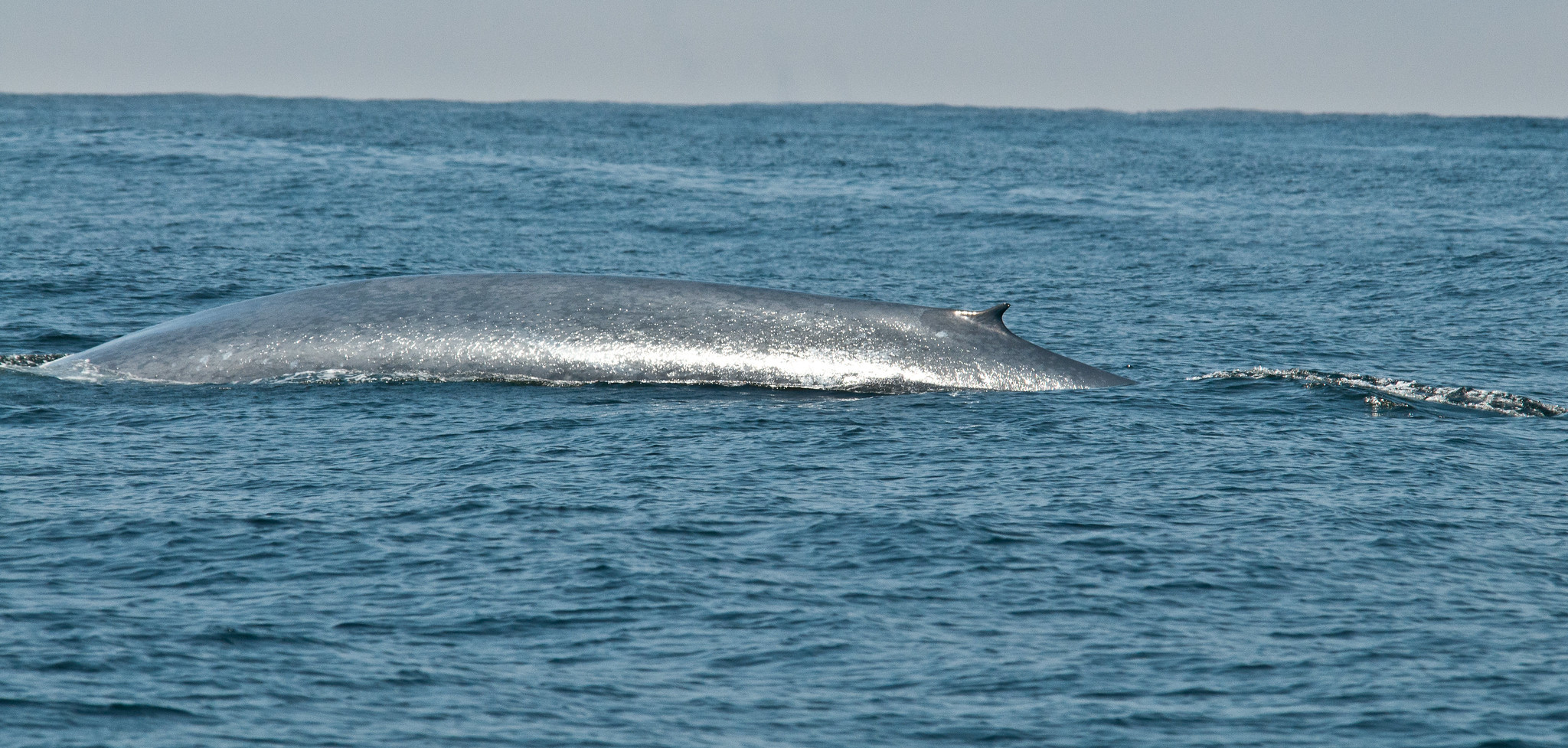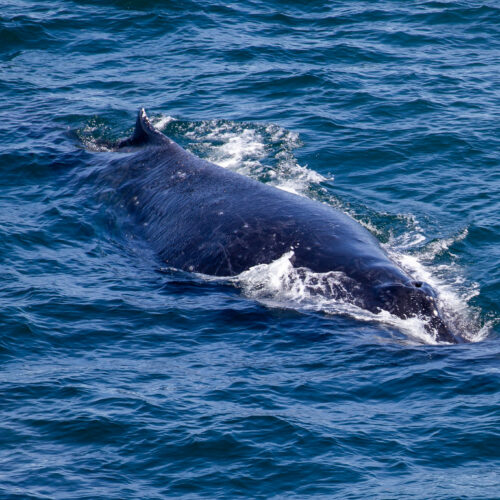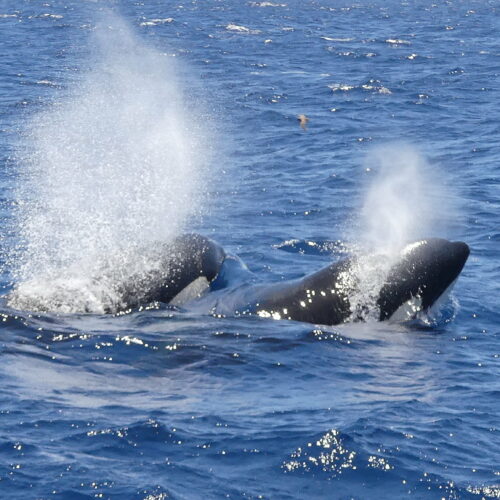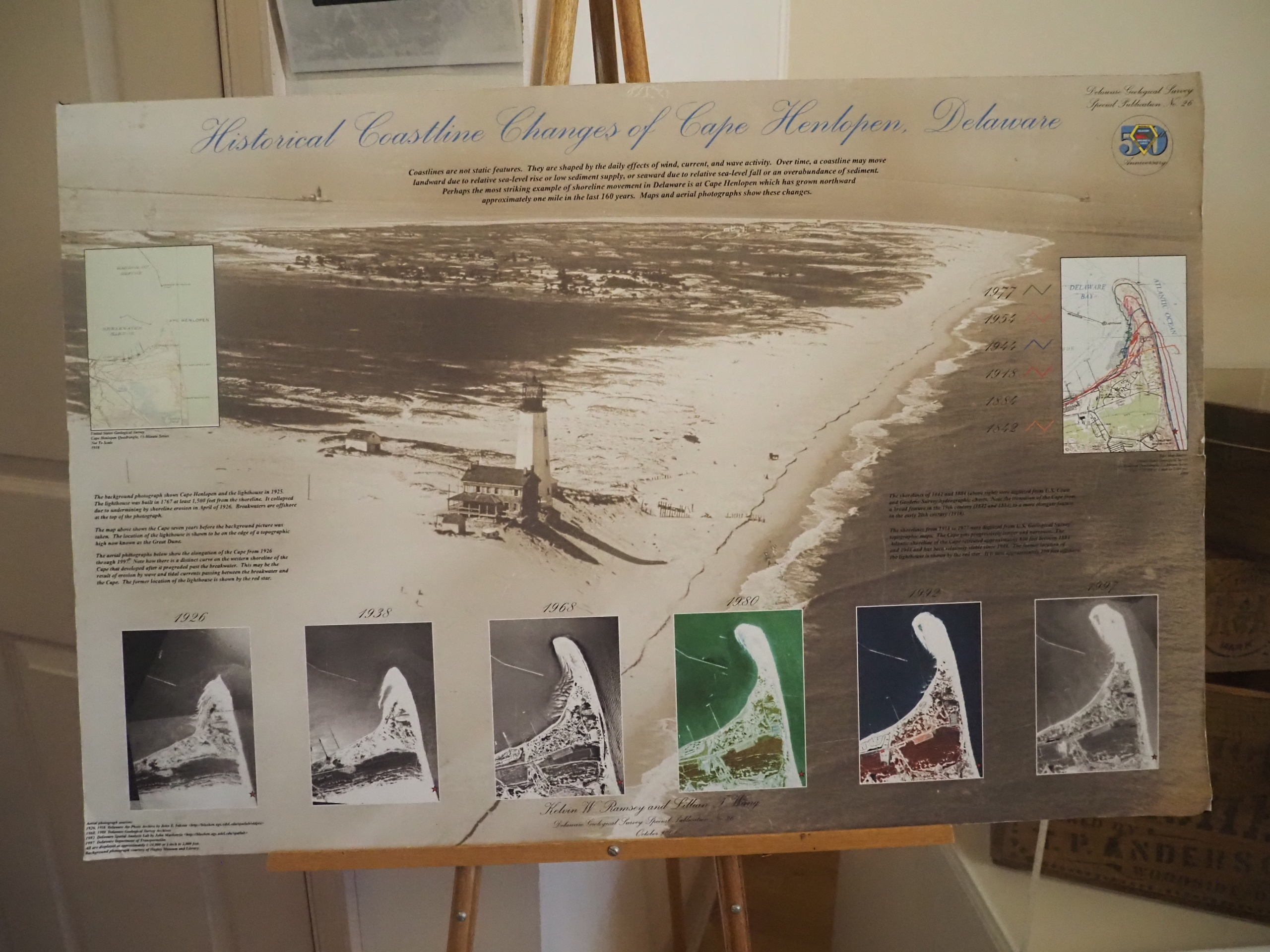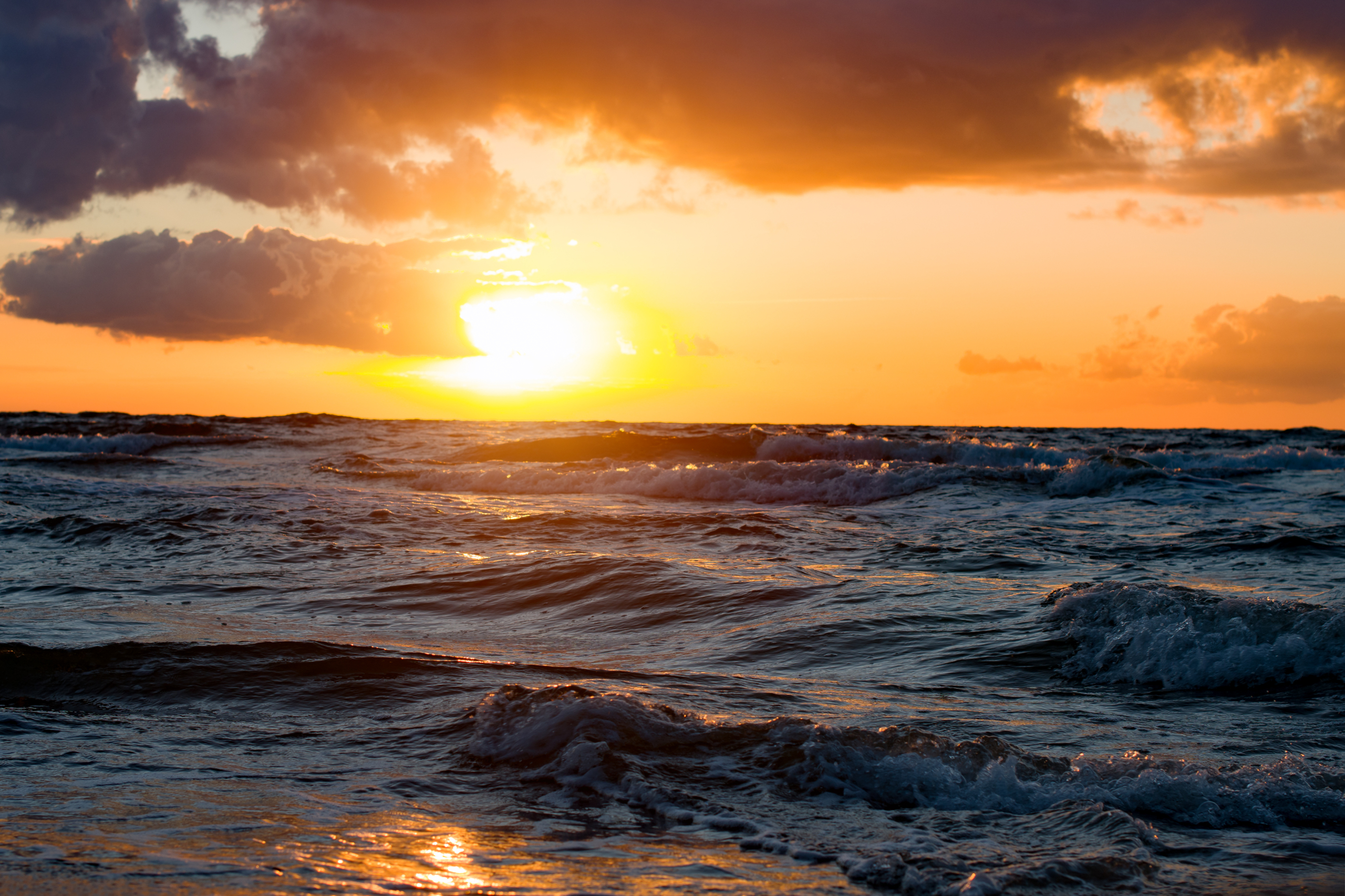This time, it’s the group that contains the largest known animal to ever exist (the Blue Whale).
As they are mammals, rather than fish, whales are warm-blooded and give birth to live young, as well as surfacing to breathe. Found in all the world’s oceans, many whales have had their populations reduced by whaling in the past, and only recently have begun to recover. Hunting whales is generally prohibited by international law. Whales appear from time to time along the coasts of Delaware, but they are in general not dangerous, as the species that appear are usually baleen whales which usually don’t pose threats to humans. Most people are actually delighted to find themselves near baleen whales as they are generally gentle and have no intent to harm humans.
Whale- & Dolphin-Watching on the Mid-Atlantic: The Atlantic coast of Maryland and Delaware, particularly near Cape Henlopen State Park (Del.), is a good place to spot whales and dolphins. The Great Dune at Cape Henlopen is a perfect vantage point (bring binoculars). There are also whale- and dolphin-watching cruises available — even sea kayaking with the dolphins.
Bombay Hook National Wildlife Refuge (Central Del.): The largest of Delaware’s wildlife refuges, Bombay Hook, northeast of Dover, has nearly 16,000 acres of tidal marsh, freshwater pools, and timbered swamps. You’ll see a lot of migratory waterfowl in fall and spring; then the migrant shorebirds and songbirds appear in April, May, and June. Source
Here are a few of the whales you might encounter along the shores of Delaware:
Humpback whales live in all oceans around the world.
They travel great distances every year and have one of the longest migrations of any mammal on the planet.
Some populations swim 5,000 miles from tropical breeding grounds to colder, more productive feeding grounds. Humpback whales feed on shrimp-like crustaceans (krill) and small fish, straining huge volumes of ocean water through their baleen plates, which act like a sieve.
As they are much larger than sharks, you’d think humpbacks would stay away from shallow water. Well, that would probably depend on your definition of shallow. While humpbacks would probably never beach themselves on purpose, they like to enter Delaware Bay as it is a huge fishery and has many other species of marine animals, which include the source of baleen whales’ diet: shrimp-like krill, plankton, and small fish (source).
Many people are usually delighted to find themselves relatively near these captivating creatures when they surface. As they are basically harmless to humans, whales are generally pleasant to be around in the water, if not downright amazing.
Some fun facts about Humpbacks (Source):
- Humpback whales grow up to 60 feet (18.3 m) long and 80,000 pounds (36.3 metric tons).
- Humpback whales can live for 80 to 90 years.
- Humpback whales have some of the longest migrations of any mammal with some populations swimming 5,000 miles (8,047 km) between breeding and feeding grounds. Populations that migrate between Alaska and Hawaii can complete the 3,000-mile (4,828 km) trip in just 36 days.
- Humpback whales eat up to 3,000 pounds (1.4 metric tons) of food a day, including krill and small fish.
- Male humpback whales create and sing songs that can be heard up to 20 miles away.
- Humpback whales are named for the distinctive hump on their backs.
- Humpback whales are active and can be seen breaching out of the water, slapping the surfacing with their fins and tails and twirling underwater.
- Humpback whale tails can be as wide as 18 feet (5.5 m).
- The scientific name for humpback whales, Megaptera, translates to “big-winged” in reference to their long pectoral fins.
Sei whales occur in subtropical, temperate, and subpolar waters around the world.
Often found with pollock in Norway, the name “sei” comes from the Norwegian word for pollock, “seje.” The global sei whale population was greatly decreased by historical commercial whaling during the 19th and 20th centuries.
Sei whales are usually observed alone or in small groups of two to five animals. They are fast swimmers that can reach speeds of over 34 miles per hour. (Source)
They aren’t aggressive to people, and are a sight to see in Delaware Bay (though they’re relatively rare). As they are among the fastest whales, it can be fascinating to watch as they zip along and follow they prey to feed.
Some fun facts about sei whales (Source):
- The sei whale is the 3rd largest living animal on this planet after the blue whale and fin whale.
- Because the sei whale is a marine mammal it is warm-blooded, produces milk, gives birth and breathes air.
- The scientific name for the sei whale is, “Balaenoptera borealis”.
- These marine mammals make up one of around 80 known species of cetacea (cetaceans include all species of whale, dolphin and porpoise).
- The sei whale can be found in all of the worlds major oceans, however they tend to avoid extremely cold/hot climates near the polar and tropical regions of the world.
- Due to extensive whaling efforts during the whaling era these marine mammals are now considered an endangered and protected species. (It is estimated that nearly 2/3 of their population was decimated due to whaling).
- The only known potential natural predators of the sei whale is a pack of killer whale.
- Aside from natural predators sei whales also face threats from collisions with ships, accidental catches in fishing nets and hazards with other fishing gear.
- Because the sei whale is a baleen whale it is born with two blowholes and lacks teeth, which are instead replaced with up to 400 baleen plates packed with bristles that are used to filter their prey from the water.
- The sei whale has been recorded holding its breath for up to 20 minutes, however their maximum underwater time is unknown.
The fin whale is the second-largest whale species on earth, second only to the blue whale.
It is found throughout the world’s oceans. It gets its name from an easy-to-spot fin on its back, near its tail.
Like all large whales, fin whales were hunted by commercial whalers, which severely lowered their populations.
This behemoth is among the largest animals in the world, and the is largest among the species that visit the First State’s surrounding waters. They’re quite rare (they’re listed as an endangered species) not just in Delaware Bay but in the North Atlantic in general.
As they are endangered, the chances of seeing one of these in Delaware Bay is small, but on the off-chance you get lucky, it would be an amazing sight. For all their size, you wouldn’t think something like that can move quickly, but you’d be surprised!
They’re very fast (just slightly slower than sei whales), and can reach 37 to 45 miles per hour in small bursts, while cruising at a slightly slower (but still fast) 30miles per hour. Source
That would be amazing to witness in Delaware Bay’s open area teeming with marine life. Truly a spectacular thing to watch, if you get the opportunity to do so.
Some fun facts about fin whales (Source):
- Fin whales are the second largest whale species growing up to 85 feet (26 m) long and 160,000 pounds (72.3 metric tons).
- Fin whales can live for 80 to 90 years.
- Fin whales have accordion-like throats that help them gulp up to 4,000 pounds (1.8 metric tons) of food a day.
- Fin whales are named for their prominent, hooked dorsal fins found near their tails.
The Orca, or Killer Whale, is the largest member of the dolphin family.
That’s right, they’re technically not whales. They are generally much smaller than their cetacean cousins listed above. The whales on this list are about twice as big on average compared to orcas. However, don’t let that fool you. “Small” compared to a whale is still pretty big. An adult orca is about as large as a school bus.
Displaying high intelligence, just like whales and dolphins, orcas are apex predators, having no natural predators themselves and are the only predator of the larger whales and sharks. Yes, you read that right. They sometimes prey on sharks! And not just the small or harmless ones, either. They are highly social and hunt in packs and take down prey you wouldn’t think they’d go after. They don’t call them killer whales for nothing.
Don’t worry, though. Despite all that, orcas generally aren’t considered threats to humans, as even if they are fast and powerful for their size, they usually don’t attack or hunt humans. What a relief, right?
So, with that out of the way, where in Delaware can you spot these awesome mammals? Well, while they can be seen in Delaware Bay like the sharks, whales, billfish, and others, orcas have recently been observed showing up in the waters near the Indian River Bay. It might be due to chasing their prey that they ended up appearing there, but if you want to catch a glimpse of them, it probably can’t hurt to check it out.
Some fun facts about orcas (Source):
- Orcas are the largest member of the dolphin family.
- A male orca can be nearly ten metres in length and weight 10,000kg.
- Orcas are highly intelligent and able to coordinate hunting tactics.
- Female orcas are thought to live to 80 years of age or more.
- The dorsal fin of a male orca is up to two metres tall.
- Orcas are extremely fast swimmers and have been recorded at speeds of up to 54kph.
- A wild orca pod can cover over 160 kilometres a day, foraging and socialising.
- They were give the name “killer whale” by ancient sailors who saw them preying on large whales.
- Orcas are still hunted in some countries, such as Greenland.
- Different kinds of orcas are called “ecotypes”. They hunt specific prey and live in different parts of the world.

